First of all, wish you a Very healthy & wealthy happy New Year. Forget your ups and downs in previous year just embrace the New Year with more energy and positive thinking. Most of you make New Year resolutions like: I have to lose 25kg weight, I want to make 6 pack abs, I quit fast food & I start jogging or exercise. So, add one new resolution that, you perform yogic activities at least for half an hour daily.
As you know that it’s winter, so in this section we describe the top and easiest Asana and Pranayama for the winter season. This Asana & Pranayama will warm up your body in chilled winter. Performing Yogic activities in cold season have a lot of plus points. If you perform the correct poses that help you to warm up your body and mobilize your joints, strengthen your chest. Cough & cold, Joints and chest related problem is common in winter weather. Asthmatic patients (Senior citizens & Kids) feel more problems in breathing comparison to normal people.
Navigator
Here are some tips which can be followed by Asana
- Body warm up is very important, before performing yogic activities; start your yoga session by body warm-up exercise like Spot jogging, squatting, Trikonasana, Tadasana etc. In winters do more body warm-up exercise in comparison to summer.
- Make a 3 to 5 hours gap between your meal and Yoga Practice.
- You have to take deep and controlled breathing during Yogic activities.
- Focusing on your inhale and exhale in between any Asana.
- Note that, in the winter season, exhale little longer than your inhale time.
- Keep in mind, when you inhale it represents upwards movement and breathe out is the twist or downwards.
- Do complete exercise, means if you perform any Asana from your right/ or left side then also perform the same process with your alternate side of your body.
- During performing any Asana, pay attention to your breathing and on your shoulders movement also.
- Take more dry fruits in the winter season and for your child give golden milk (Turmeric mix milk) in the morning or before going to bed. This will make your body ready for winters.
- Instead of having Tea, drink the mixture of Tulsi, Ginger, Black pepper & cloves and you can also add some salt or sugar to this mixture. This is the best antioxidants helps you to fight against the general disease.
Let’s start the Top Asana for winters: –
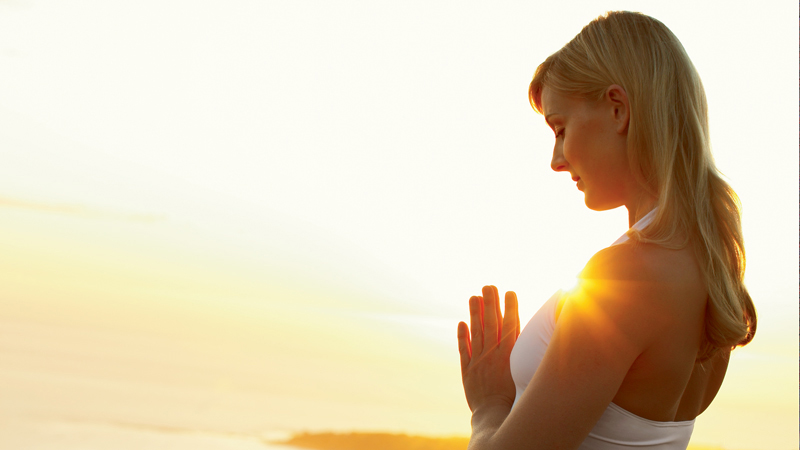 This is the Best pose for starting your yoga session. It includes 12 steps and it is power packed Asana. Perform this Pose 3 to 6 times especially with mantras in winter. This Posture produces the ample heat to warm your body. So, this is the important Asana, in cold weather. But in summer perform this Asana only 1 to 2 times. If you want to know more (steps and benefits in detail) about this Asana please go through to our Asana section and select this Asana.
This is the Best pose for starting your yoga session. It includes 12 steps and it is power packed Asana. Perform this Pose 3 to 6 times especially with mantras in winter. This Posture produces the ample heat to warm your body. So, this is the important Asana, in cold weather. But in summer perform this Asana only 1 to 2 times. If you want to know more (steps and benefits in detail) about this Asana please go through to our Asana section and select this Asana.
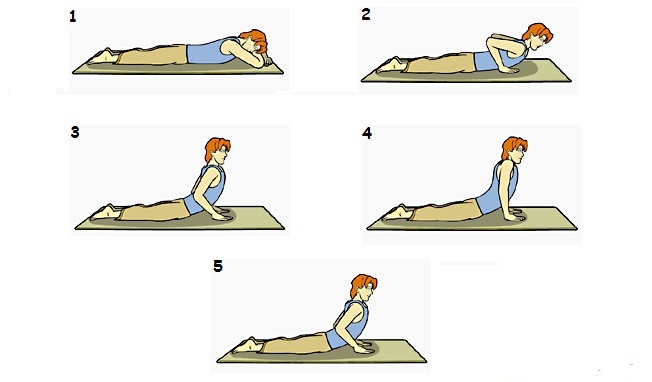 If you spent some time performing this Asana daily; this can help to kick out stress, anxiety, and depression from our Mind and it increases the flexibility of our body and strength also. This invigorating backbend was named such because Bhujangasana reflects the posture of a cobra that has its hood raised.
If you spent some time performing this Asana daily; this can help to kick out stress, anxiety, and depression from our Mind and it increases the flexibility of our body and strength also. This invigorating backbend was named such because Bhujangasana reflects the posture of a cobra that has its hood raised.
If you perform Bhujangasana comfortably then try to attempt Purna Bhujangasana (Full cobra pose) full cobra pose comes under the Advanced level; so be careful in attempting this pose.
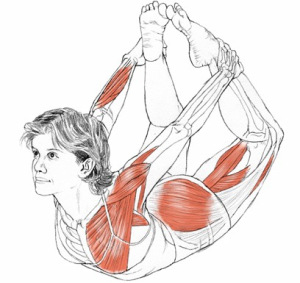 Bow pose is also very important Asana for winter. Dhanurasana raises both halves of the body at once, mixing the movements of the Cobra and Locust, and countering the Plough and the Forward Bend, same as like an archer stringing a bow. In this, you use your hands and arms to pull your trunk and legs up together to form a curve. It tones back muscles and maintains the elasticity of spine, improving posture and increasing vitality. People who are master in Dhanurasana perform Purna Dhanurasana after this.
Bow pose is also very important Asana for winter. Dhanurasana raises both halves of the body at once, mixing the movements of the Cobra and Locust, and countering the Plough and the Forward Bend, same as like an archer stringing a bow. In this, you use your hands and arms to pull your trunk and legs up together to form a curve. It tones back muscles and maintains the elasticity of spine, improving posture and increasing vitality. People who are master in Dhanurasana perform Purna Dhanurasana after this.
When you perform this Asana try to hold some time in Sarvangasana then go for Halasana. Sarvangasana is the important step for Halasana. By this, you Cover two Asana in one (Sarvangasana + Halasana). But keep focusing on your inhalation & Exhalation. Hold your breath minimum 5 cycles of breath in both Sarvangasana and in Halasana also.
-
Setu Bandha Sarvangasana
If you want variations, then go for Setu Bandha Sarvangasana after completing Halasana. But do this Asana in a correct way take help from your trainer if you are uncomfortable.
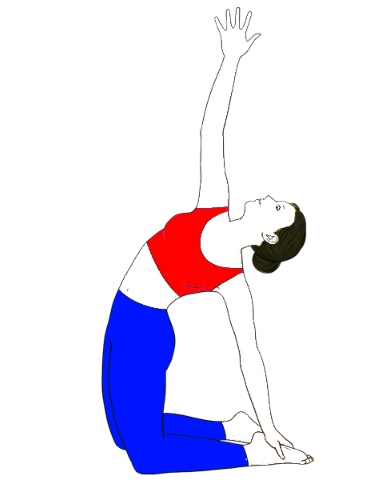 While performing this posture, push yourself up and try to maintain your hips at an angle of 90 degrees over your knees. Ustrasana Stretches the anterior muscles of the body and improves the flexibility of your spine and strengthens it.
While performing this posture, push yourself up and try to maintain your hips at an angle of 90 degrees over your knees. Ustrasana Stretches the anterior muscles of the body and improves the flexibility of your spine and strengthens it.
This pose improves your digestion and beneficial in the lower back problem. It is useful as an initial practice for back bending asana. After discharging the pose go to child pose and take some rest and repeat the steps for 3 to 5 times.
This posture is good for your abdomen region to hold your breath during the final stage as much as you can.
In this Asana you have to keep your body parallel to the floor and which is supported by your toes and palms with elbows at a right angle but not touching the floor. Chaturanga Dandasana looks much like a push-up pose, but with the hands very low (simply over the pelvis), and the elbows kept in at the edges of the body.
It is the best exercise for your wrists and also beneficial for your lower back. This pose stretches your lower back muscles along with shoulders and chest also. This is very good posture for toning your abdominal muscles. Urdhva Mukha Svanasana is useful in depression, sciatica, and fatigue.
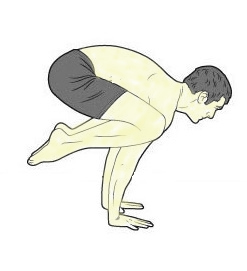 Here is another awesome Asana, for warming your body. Note that when you are in final pose hold your breaths for 30to 60 seconds. If you feel difficulty during breath retention then continue this pose with deep and control breathing.
Here is another awesome Asana, for warming your body. Note that when you are in final pose hold your breaths for 30to 60 seconds. If you feel difficulty during breath retention then continue this pose with deep and control breathing.
Breathing Exercise for winters (Pranayama)
So, these are the best Pranayama for chilled winters. Avoid Sheetali, Sheetkaari & Chandra Bhedana Pranayama.
After these, perform meditation or Corpse pose for relaxing your body. Use Luke warm water for your drinking purpose. If you go outside, then use woolen caps for covering your head & ears. Cover up your neck region before leaving home.
(Never lose your hope; Save water & save your Environment)

